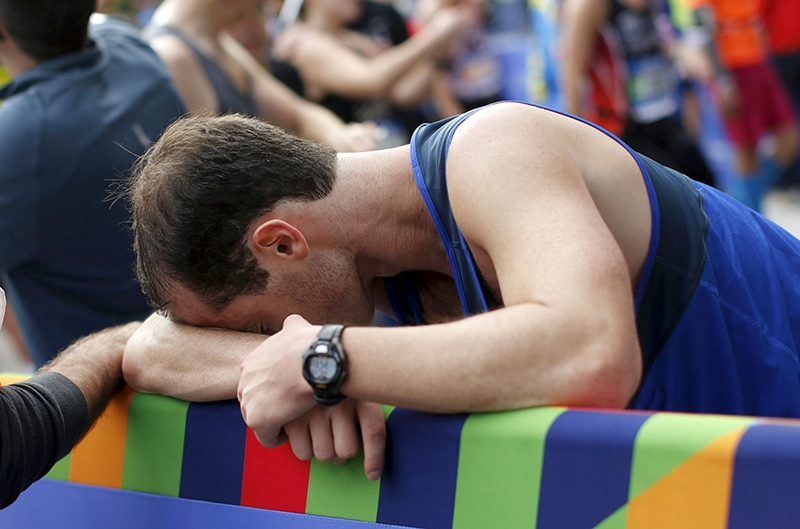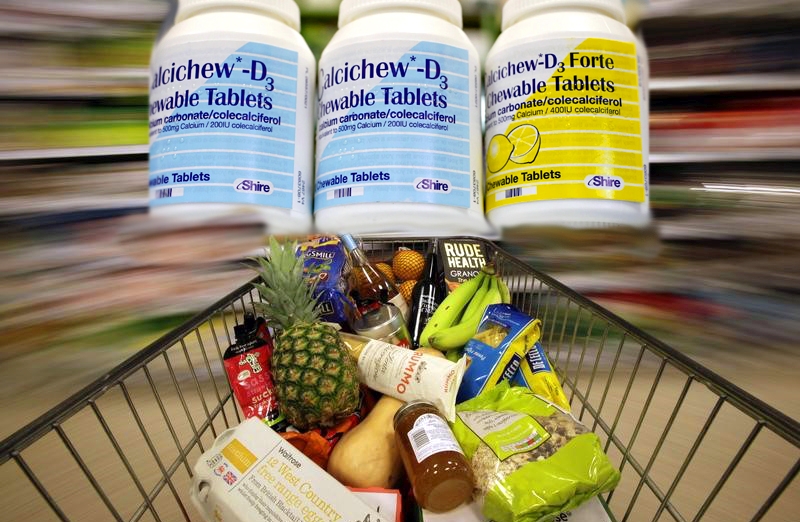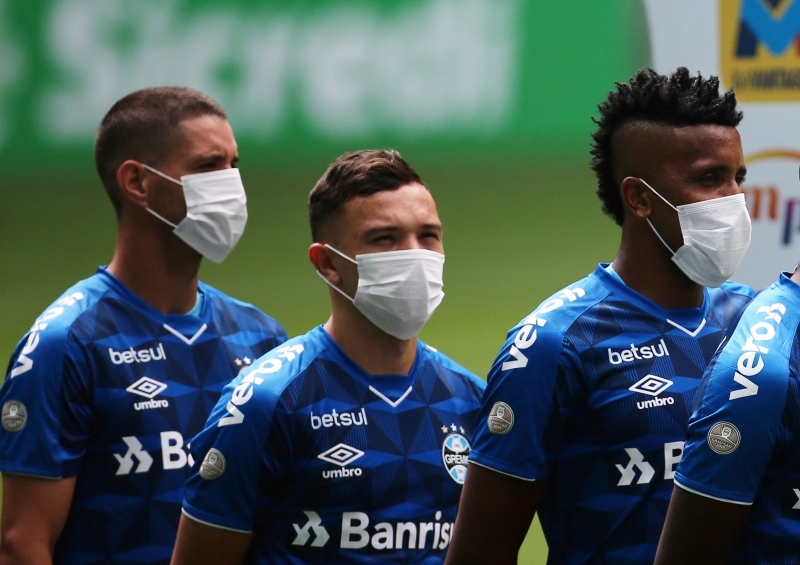You are viewing 1 of your 1 free articles. For unlimited access take a risk-free trial
COVID-19 and athletes: returning to sport after illness

How should athletes prepare for a return to sport following coronavirus infection safely and effectively? Andrew Hamilton highlights new research by UK scientists and provides practical guidelines
Being a completely new virus, scientists have had much to learn about COVID-19, including its protein structure and genome, its transmission and infectivity characteristics, its physiological effects in the body, and of course potential treatment options for infected patients. But despite making a huge amount of progress, there’s still so much we don’t understand about the behavior of this virus in the human body.Recovery from COVID-19
One of the most poorly understood aspects of coronavirus is patient recovery – not just from the most severe symptoms but in the sense of making a full return to health. Research has established that the rate of recovery and return to pre-illness levels of health is partly down to the severity of the illness, but also intimately linked to the sufferer’s genetic makeup(1). Bizarrely therefore, some who get only mild symptoms of COVID-19 can take many weeks to feel back to full strength, while others who have endured more significant symptoms may on occasion recover relatively rapidly(2).Challenge for athletes
A variable and potentially extended recovery can be frustrating for anyone seeking a return to full health and normal activity. For an athlete however, it becomes an even more formidable proposition; not only is there the challenge of regaining lost fitness after the inevitable inactivity-induced detraining that occurs during an illness (see this article for more on detraining), there’s also the potential to push the body too hard, too soon, leading to a possible relapse or post-viral fatigue episode. With no previous data from this virus’s effect on athletes to draw on, an athlete wishing to return to sport following coronavirus infection will naturally have questions to ask:- *How soon can I resume training?
- *What exercise should I begin with?
- *How hard and how often should I be training?
- *How should I progress my training?
- *What are the warning signs I need to look out for if I’m pushing too hard?
New research
Although we have very little clinical data to draw upon, a team of UK scientists have just published a paper of particular relevance for any athlete seeking a safe and effective return to sport following a bout of COVID-19 infection(8). In this study, the researchers have drawn together the latest data on COVID-19, and the interplay between the disease and the physiological demands of endurance exercise to come up with a ‘best practice’ return-to-sport protocol for recovering athletes who have suffered mild to moderate illness. NB: Athletes who have been unfortunate enough to require hospitalization are recommended to undergo extra assessment and screening by a medical professional before attempting any return to sport. The same is true for any athletes who have pre-existing medical conditions such as diabetes, cardiovascular disease or renal disease.Graduated return to play protocol
The foundation of this protocol is a graduated return to play (GRTP) program, which introduces physical activity and sport in a progressive and stepwise fashion. Before getting underway, the key criteria that should be met are as follows:- #The athlete must be able to complete activities of daily living, and be able to walk at least 500 metres on the flat without excessive fatigue or breathlessness.
- #Athletes should have had at least ten days of rest and be at least seven days symptom-free before starting and exercise.
- #Athletes must be psychologically ready to return to sport. This can be gauged using a standardized questionnaire such as the I-PPRS scale – you can find an example of this questionnaire here: www.momsteam.com/injury-psychological-readiness-return-sport-scale
- #The guidance above is just guidance; experience also suggests that despite ticking all the boxes, some athletes take well over three weeks to recover and be ready to commence exercise.
Monitoring
To help ensure athletes don’t over-exert themselves and risk suffering a relapse, some self-monitoring may be useful, including:- *Resting heart rate (a rise in RHR may indicate too much too soon)
- *Rated perceived exertion (if perceived exertion increases for a given workload/speed, athletes may need to back off).
- *Sleep, stress, fatigue and muscle soreness (poorer sleep quality or an increase in any of the other factors indicates too much loading).
Further assessments
As mentioned above, this protocol is recommended only for athletes who have suffered mild to moderate illness. If you are unlucky enough to have suffered a complicated or prolonged COVID-19 illness, you may need further investigations, including:- Blood testing for markers of inflammation (high sensitivity-troponin, brain natriuretic peptide and C-reactive protein [CRP]).
- Cardiac monitoring (12-lead ECG, echocardiogram, exercise tolerance test and a cardiac MRI).
- A respiratory function assessment (using spirometry).
- Renal and haematological monitoring.
Figure 1: Schematic overview of a return-to-sport protocol following COVID-19 illness*

*graphic courtesy of UK Home Countries Institutes of Sport
References
- www.medrxiv.org/content/10.1101/2020.04.22.20072124v2
- www.theguardian.com/world/2020/may/01/lingering-and-painful-long-and-unclear-road-to-coronavirus-recovery-long-lasting-symptoms
- Nephron 2020;144:213–21
- Eur J Prev Cardiol. In Press 2020:204748732093059.doi:10.1177/2047487320930596
- bjsm.bmj.com/content/early/2020/06/18/bjsports-2020-102516.abstract
- Respir Med. 2020; pii: S2213-2600 (20) 30175-2 [Epub ahead of print]
- Condliffe R, et al. British thoracic Society guidance on venous thromboembolic disease in patients with COVID-19 British thoracic Society pulmonary vascular specialist Advisory group 2020
- dx.doi.org/10.1136/bjsports-2020-102637
Newsletter Sign Up
Testimonials
Dr. Alexandra Fandetti-Robin, Back & Body Chiropractic
Elspeth Cowell MSCh DpodM SRCh HCPC reg
William Hunter, Nuffield Health
Newsletter Sign Up
Coaches Testimonials
Dr. Alexandra Fandetti-Robin, Back & Body Chiropractic
Elspeth Cowell MSCh DpodM SRCh HCPC reg
William Hunter, Nuffield Health
Keep up with latest sports science research and apply it to maximize performance
Today you have the chance to join a group of athletes, and sports coaches/trainers who all have something special in common...
They use the latest research to improve performance for themselves and their clients - both athletes and sports teams - with help from global specialists in the fields of sports science, sports medicine and sports psychology.
They do this by reading Sports Performance Bulletin, an easy-to-digest but serious-minded journal dedicated to high performance sports. SPB offers a wealth of information and insight into the latest research, in an easily-accessible and understood format, along with a wealth of practical recommendations.
*includes 3 coaching manuals
Get Inspired
All the latest techniques and approaches
Sports Performance Bulletin helps dedicated endurance athletes improve their performance. Sense-checking the latest sports science research, and sourcing evidence and case studies to support findings, Sports Performance Bulletin turns proven insights into easily digestible practical advice. Supporting athletes, coaches and professionals who wish to ensure their guidance and programmes are kept right up to date and based on credible science.













